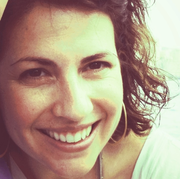[:el]
By scanning the brains of babies whose siblings have autism, researchers say they have been able to make reasonably accurate forecasts about which of these high-risk infants will later develop autism themselves. The findings raise the prospect of diagnosing autism spectrum disorder (ASD) months before children develop symptoms, a goal that has proved elusive.
Overgrowth in brain volume during the first year of life forecasts whether a child at high risk of developing autism spectrum disorder is likely to receive a diagnosis at age 2, according to a small study published in the journal Nature.
This new diagnostic method requires MRI brain scans to look for the features of autism, a developmental disability with behavioral symptoms that usually become obvious between ages 2 and 4.
Further research is needed before it can be developed into a tool for diagnosing infants at high risk of developing autism, said Heather Cody Hazlett, lead author of the study and a psychologist at the Carolina Institute for Developmental Disabilities and the University of North Carolina at Chapel Hill. In the research team participates Penelope Kostopoulos from McGill University in Montreal.
Common symptoms of autism include difficulty with communication and repetitive behaviors. In the United States, about one in 68 children has been identified with autism spectrum disorder, according to the Centers for Disease Control and Prevention. Yet, for infants who have an autistic sibling, the risk of developing the disorder may be as high as one in five. The risk is only one in 100 for infants without an affected sibling.
[:]



